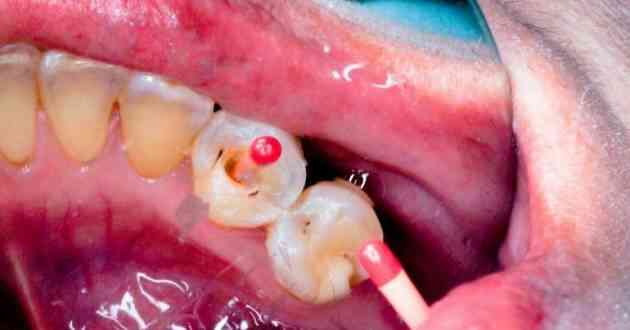A Guide To Root Canal Treatment In Toronto
An endodontist is a root canal specialist who carries out a root canal...
An endodontist is a root canal specialist who carries out a root canal, which entails removing the infected pulp and nerve from the tooth's root, cleaning and shaping the interior, filling the space, and sealing it.
Your dentist will cover the tooth with a crown to protect it and return it to its pre-damage condition.
When Is A Root Canal Needed?
A root canal occurs when a tooth's pulp, the soft interior, is hurt, inflamed, or infected.
Removing damaged or infected pulp is the best method for safeguarding the tooth's structural integrity.
The following list includes common causes of pulp damage:
- Due to an untreated cavity and extensive decay.
- One tooth, multiple dental operations.
- A tooth injury (you could hurt your tooth if you get smacked in the mouth; even if the tooth doesn't fracture, the pulp could still be harmed)
- The most common symptoms are soreness that comes with damaged pulp, swelling, and a warm sensation in the gums.
The Root Canal Procedure
An X-ray is taken as the operation's initial stage to examine the root canals' form and check for any indications of infection in the nearby bone. Our root canal specialist in Toronto or endodontist will make the region close to the tooth comfortable with a local anesthetic. Since the nerve is dead, anesthesia may not be required, but most dentists numb the area to help patients feel more at ease and calm.
- Your dentist will place a rubber dam (a rubber sheet) around the tooth to keep the area dry and saliva-free while executing the procedure.
- The tooth’s pulp, germs, and other particles are removed. Root canal tools are used to complete the cleaning-out procedure.
- After a thorough cleaning, the tooth needs to be sealed. Our best orthodontist specialist in Toronto opted to wait a week before cementing the tooth. For instance, our root canal dentist could insert a medication inside the tooth to cure an infection. Some people may seal the tooth the same day it is cleaned out.
The final step can need more tooth restoration. A crown or another repair must frequently be placed on the tooth to protect it, keep it from breaking, and restore it to full function since a tooth that requires root canal therapy frequently has an ample filling, considerable decay, or other weakness. The need for any extra dental work will be discussed with you by your dentist.

Follow-Up After Your Root Canal
- When the anesthetic wears off, your teeth and gums can feel pain. Swollen gums are another concern.
- Most dentists advise taking over-the-counter drugs such as acetaminophen (Tylenol) or ibuprofen to relieve these symptoms.
- Call your root canal specialist in Toronto if the discomfort lasts longer than a few days or worsens.
- You should be able to return to your routine the day after the procedure.
- Delay using the damaged tooth for chewing until it has been filled or has a crown on top of it.
Following the treatment, you might require a few weeks to get used to how your tooth feels. There is no reason to be alarmed because this is normal.
Types Of Root Canal Treatment Near Me
Here are some types of root canal treatments near me
Nonsurgical Root Canal Treatment
The inner nerve tissue of the tooth is removed with this type of root canal therapy, and the inner chamber is sealed. If your tooth has undergone severe decay that cannot be repaired with a filling or an infection that has damaged the nerves of your tooth, you may require nonsurgical root canal therapy. In either case, a root canal might be a good option for treatment!
Apicoectomy
When a primary root canal, the nonsurgical root canal treatment we just reviewed, is unsuccessful, an apicoectomy is a technique done. In this situation, the infection or inflammation may still exist in your tooth or jaw's alveolar bone.
An apicoectomy is a type of treatment that uses just local anesthetic and is categorized as a microsurgical technique. Your tooth's root tip is completely removed, and the canal is sealed with
After removing the harmful material, the bone in your jaw heals the tooth's root. You will only stay in recuperation temporarily; most patients may resume regular activities the next day.
Pulpotomy And Pulpectomy
Baby teeth frequently have pulpotomies and pulpectomies, essentially root canals for kids. Both of these treatments aid in preserving your child's natural tooth, but there is one distinction between them.
A pulpotomy involves removing the diseased pulp from the tooth's chamber and leaving the healthy pulp in your child's tooth roots. A pulpotomy only functions if the inner nerve tissue of your child's tooth is only partially compromised.
Root Canal Specialist Near Me
If you are looking for a root canal specialist near me, the balsam dental in Toronto is best for you. In conclusion, root canal treatment is highly effective for saving an infected or damaged tooth. It involves removing the infected pulp, cleaning the root canal, and sealing it. Proper care ensures a root canal can provide long-lasting relief and preserve the natural tooth structure, avoiding extraction.


